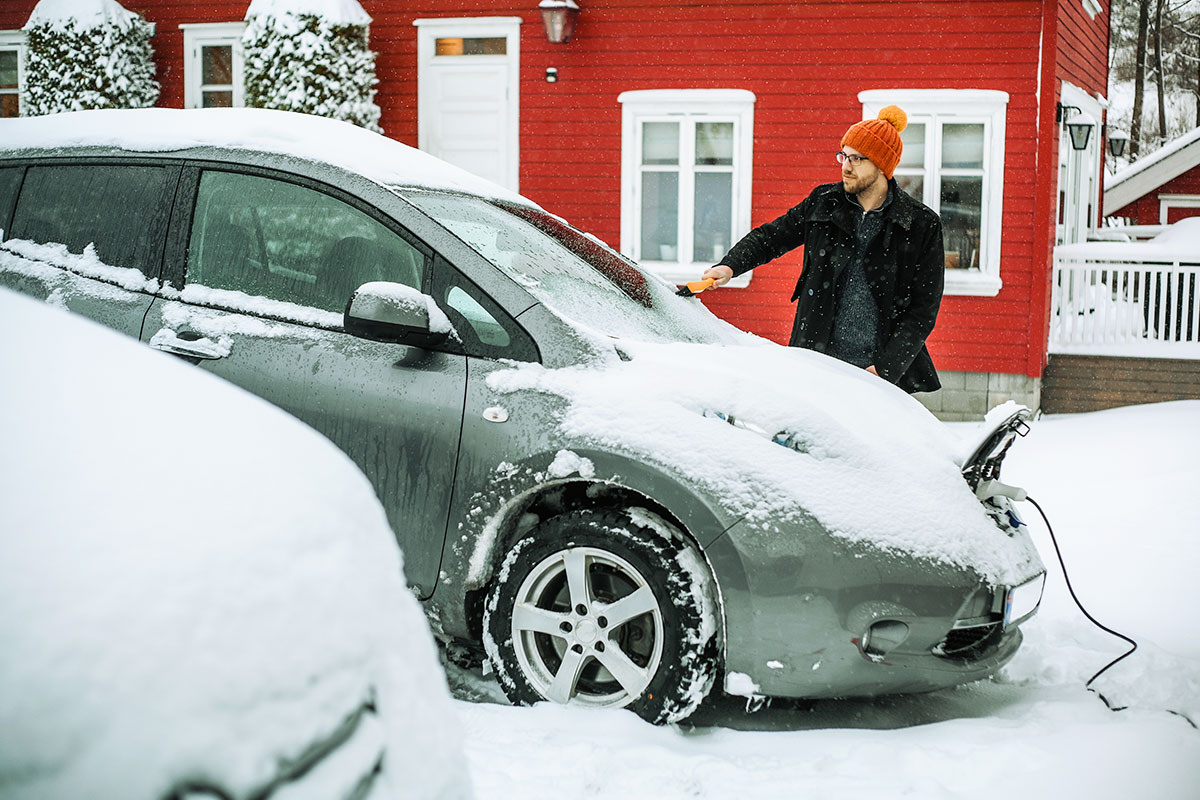How to drive an electric car in cold and slippery conditions
No matter how long people have lived, winter still tends to arrive unexpectedly. In order for electric car users to be ready for the inevitable, we have put together some tips on how to cope better with the cold season.
The peak of traffic accidents in Estonia is the middle of summer, but it is also worth being vigilant in the coldest months of the year. Winter brings slipperiness and people are not able to quickly change their driving habits.
In addition to higher risks in traffic, cold weather affects the performance of electric cars. In the case of older electric cars, the mileage can drop by up to 40% when temperatures fall to around 4 degrees. Given that most newer cars have a range of more than 200 kilometres and average daily trips usually do not exceed 50 kilometres, there should be no problems in this regard.
If you use an electric car and charge it at home, simple habits can make winter drives safer and more comfortable for you.
Keep the battery warm
In cold weather, electric car batteries have to do more work, which means they discharge faster in crisp weather. When you start your car after a long and crisp night, the battery uses more energy than usual to warm itself, leaving less resource for driving.
Connect your electric car to the charger as often as possible. If possible, do it at work, when you get home after work, visit a shopping centre or cinema. The technology magazine Wired recommends always keeping the battery at 20% or above in winter. Regularly clean your vehicle of snow and ice, and, if possible, park in sunlight.
Put on warmer clothes
Saving battery power is easier if you don't let your car's air conditioner run at maximum capacity in cold weather. It is wise to heat your cabin with less power and use seat and steering wheel heating. Also, dress a little warmer. By the way, this advice helps to maintain good health as well, because stepping out from a summer-warm car into winter-cold air promotes catching a cold!
Watch your speed
Speeding in winter is not sensible for at least two reasons. Firstly, driving conditions can be insidious. The road may be covered in ice, and rain, snow or fog may interfere with visibility. These are factors that contribute to accidents.
Secondly, higher speeds force the battery to operate more intensively, which means a faster reduction in range. Avoid sudden braking and acceleration. Saving battery power is especially important in cold weather. It is not worth increasing the speed to more than 100 kilometres per hour, and there are not many opportunities for that on Estonian roads.
Preheat your car before driving
A good way to prepare your car for a winter morning is to use preheating. If your car is connected to the charger, you can start warming up the battery so that it is not cold when you start driving. This system allows the car's interior to be heated too, making short trips more enjoyable on crisp mornings. As your car is heated by the current from the charger, it does not reduce the battery charge at the start of your journey.
For most new electric cars, the preheater can be set up and started with a smart app or remote control that comes with the car. In addition, the heater can be set to the desired time so that the car knows every morning when you want to drive out of home in a warm car.
Do not delay putting on the winter tyres
The winter tyre season runs from October to March in Estonia, at least. With winter tyres, it is not worth waiting until the day the first snow falls and the queues in all service points are until the following week. Once the daily average temperature does not exceed seven degrees, it is wise to put on the winter tyres.
Make sure that your winter tyres are in good condition, constantly check the tyre pressure and clean the rims from dirt to prevent the wheels from going out of balance. You can read more about winter tyres here.
Buy an electric car with a heat pump
Heat pumps use less energy than traditional air conditioners, making them especially useful in winter. Nissan added such a device to its electric cars back in 2013, and now they have become commonplace. Especially for vehicles sold to the Nordic countries.
Use Eco mode and do not allow the mirrors to fold
When driving in winter, use the car's preset Eco mode. Its name may vary from manufacturer to manufacturer, but the goal is one: to maximize range.
Also note that if your vehicle's side mirrors automatically "fold", then switch off this function for the winter. Mirrors can freeze and the motor driving them to close or open can break.

